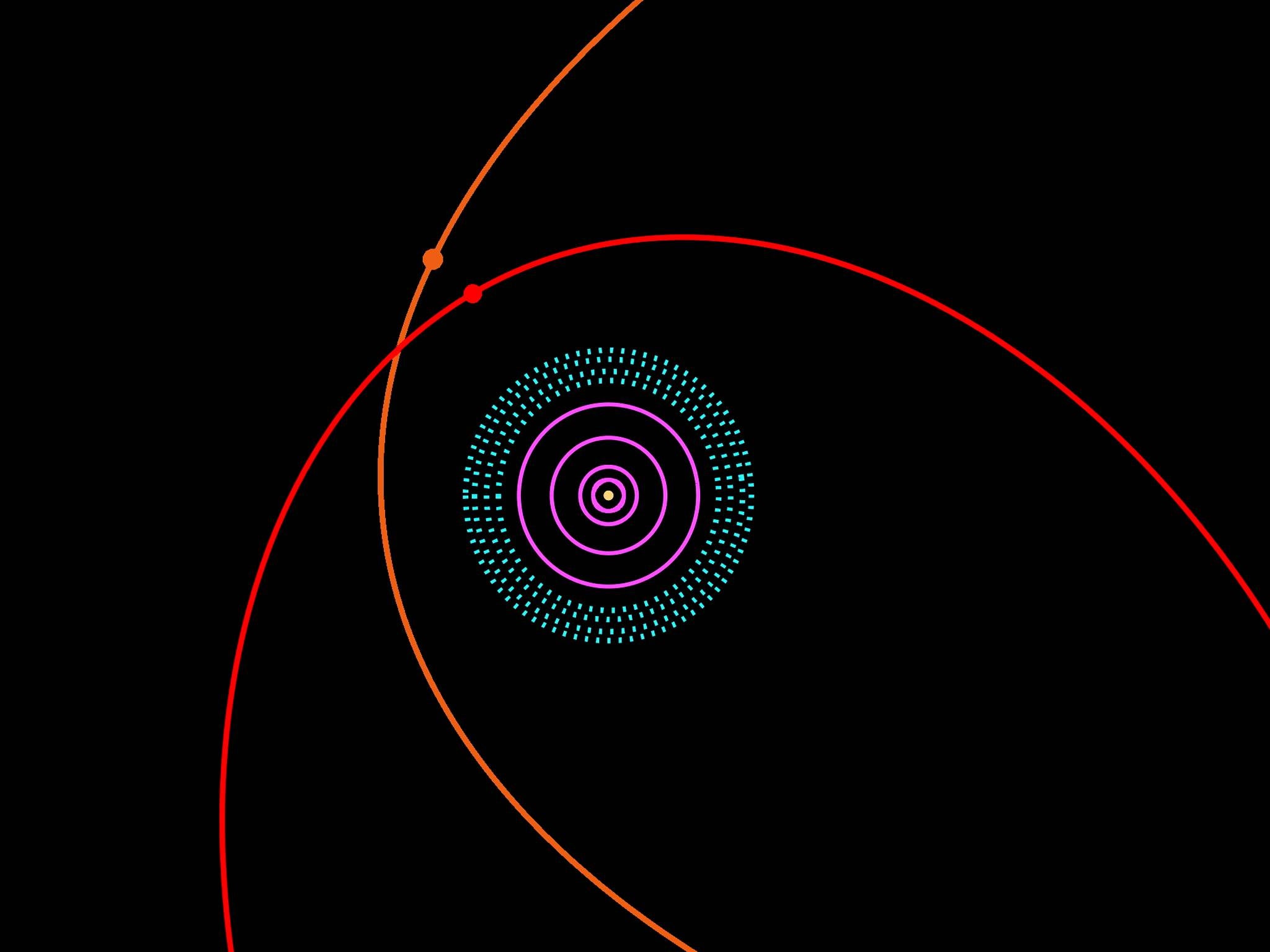Astronomers find new dwarf planet - and hints of a much larger one hidden on the edge of the Solar System

Astronomers have discovered a new small planet at the edge of the Solar System and in the process have received tantalising support for the idea that there may be a much larger planet still waiting to be discovered even further away.
In a separate development, another team of researchers have startled seasoned sky watchers by finding an asteroid with its own orbiting ring system similar to the famous rings of Saturn.
The two sets of discoveries, published together in the journal Nature, are both surprising additions to the known Solar System and show that there is still much to be learned about our own cosmic back-yard.
The new dwarf planet, prosaically named 2012 VP113, has a solar orbit that takes it beyond the furthest known edge of the Solar System but its remote location suggests a gravitational influence from a much larger planet perhaps ten times the size of Earth still waiting to be found, scientists said.
Only one object, another small planet named Sedna, was previously known to exist in this remote part of the Solar System. However, whereas the outer boundary of Sedna’s orbit is 76 times the distance between the Earth and the Sun, the closet orbit of 2012 VP113 to the Sun is 80 times the distance.
“This is an extraordinary result that redefines our understanding of our Solar System,” said Linda Elkins-Tanton of Carnegie Institution, which took part in the discovery.
The new planet is estimated to be 450km in diameter, compared to the 1,000km-wide Sedna, and could be part of a constellation of orbiting objects known as the inner Oort Cloud, which exists beyond the edge of the Kuiper Belt, a band of icy asteroids that orbit further out than the planet Neptune.
“The search for these distant inner Oort Cloud objects beyond Sedna and 2012 VP113 should continue as they could tell us a lot about how our Solar System formed and evolved,” said Scott Sheppard of the Carnegie Institution, who made the discovery with Chad Trujillo of the Gemini Observatory in Hawaii.
“Some of these inner Oort Cloud objects could rival the size of Mars or even Earth. This is because many of the inner Oort Cloud objects are so distant that even very large ones would be too faint to detect with current technology,” Dr Sheppard said.
Meanwhile, a second team of researchers have discovered an icy asteroid surrounded by a double-ring system similar to the rings of Saturn. Only three other planets – Jupiter, Neptune and Uranus – were known to have rings.
The scientists made the discovery within the 20 seconds it took for the asteroid to pass in front of a distant star. The existence of the rings emerged in the form of two extra dips in light intensity as the rings on each side of the asteroid interrupted the starlight reaching the earth .
Martin Dominik of the University of St Andrews, who was part of the team, said that the rings around the 250km-wide asteroid, called Chariklo, are seven and three kilometres wide respectively with an eight kilometre gap in between. They were observed by telescopes at seven locations across South America including the European Southern Observatory at La Silla, Chile.
“We did not even dare to dream about finding a ring, let alone two. That took us by complete surprise, and we actually do not know why they are there,” Dr Dominik said.
The rings probably consist of pebbles and icy particles formed from some kind of collision with the asteroid in the past. The scientists suggest that the asteroid may be in a similar evolutionary stage to the early Earth, after a Mars-like object collided with it to form a ring of orbiting debris that eventually coalesced into the Moon.
Felipe Braga-Ribas of the National Observatory in Brazil, who was the lead author of the study, said: “We weren’t looking for a ring and didn’t think small bodies like Chariklo had them at all, so the discovery and the amazing amount of detail we saw in the system came as a complete surprise.”
“So, as well as the rings, it’s likely that Chariklo has at least one small moon still waiting to be discovered,” Dr Braga-Ribas said.
Join our commenting forum
Join thought-provoking conversations, follow other Independent readers and see their replies
0Comments